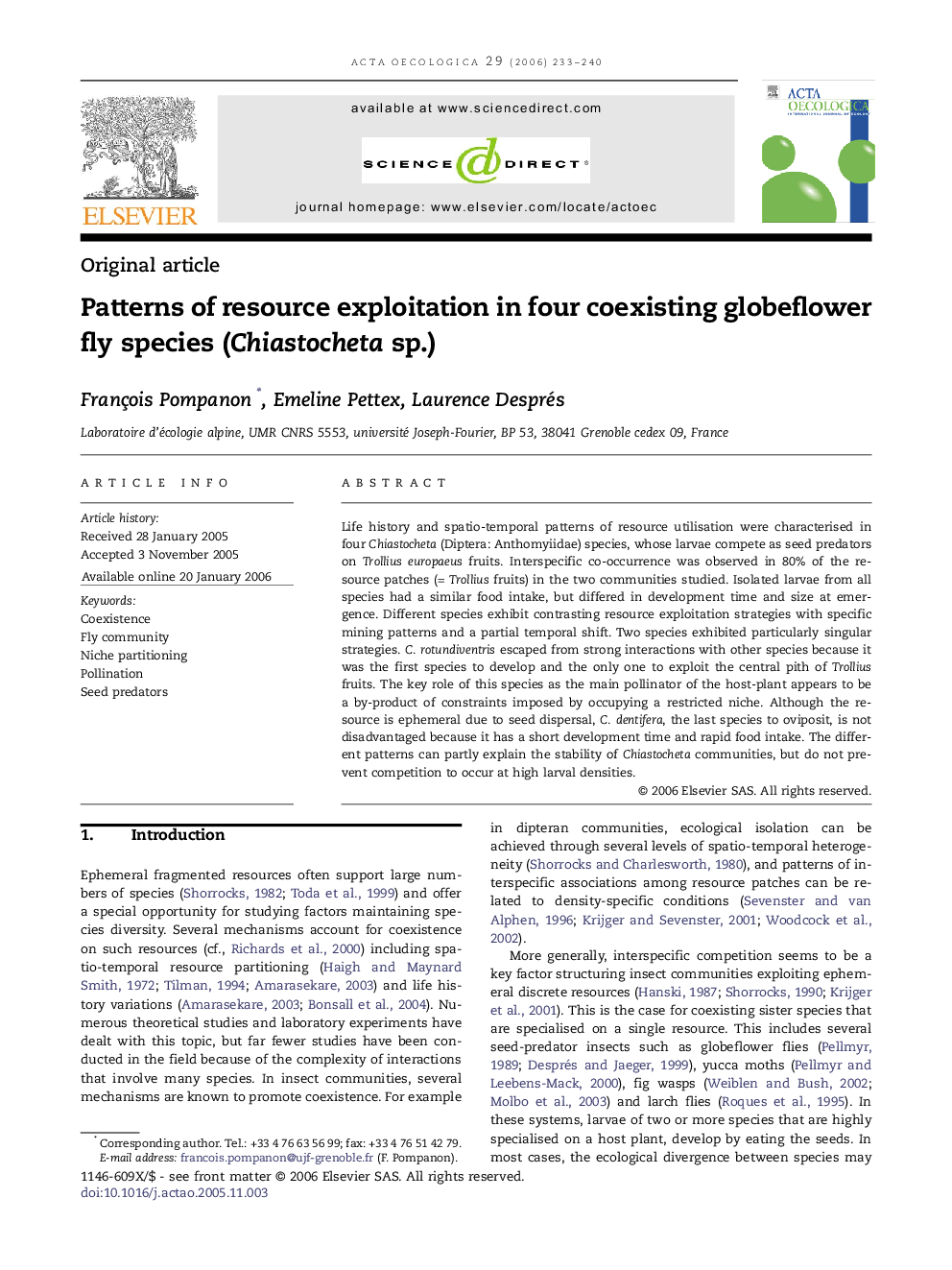| Article ID | Journal | Published Year | Pages | File Type |
|---|---|---|---|---|
| 4381323 | Acta Oecologica | 2006 | 8 Pages |
Life history and spatio-temporal patterns of resource utilisation were characterised in four Chiastocheta (Diptera: Anthomyiidae) species, whose larvae compete as seed predators on Trollius europaeus fruits. Interspecific co-occurrence was observed in 80% of the resource patches (= Trollius fruits) in the two communities studied. Isolated larvae from all species had a similar food intake, but differed in development time and size at emergence. Different species exhibit contrasting resource exploitation strategies with specific mining patterns and a partial temporal shift. Two species exhibited particularly singular strategies. C. rotundiventris escaped from strong interactions with other species because it was the first species to develop and the only one to exploit the central pith of Trollius fruits. The key role of this species as the main pollinator of the host-plant appears to be a by-product of constraints imposed by occupying a restricted niche. Although the resource is ephemeral due to seed dispersal, C. dentifera, the last species to oviposit, is not disadvantaged because it has a short development time and rapid food intake. The different patterns can partly explain the stability of Chiastocheta communities, but do not prevent competition to occur at high larval densities.
